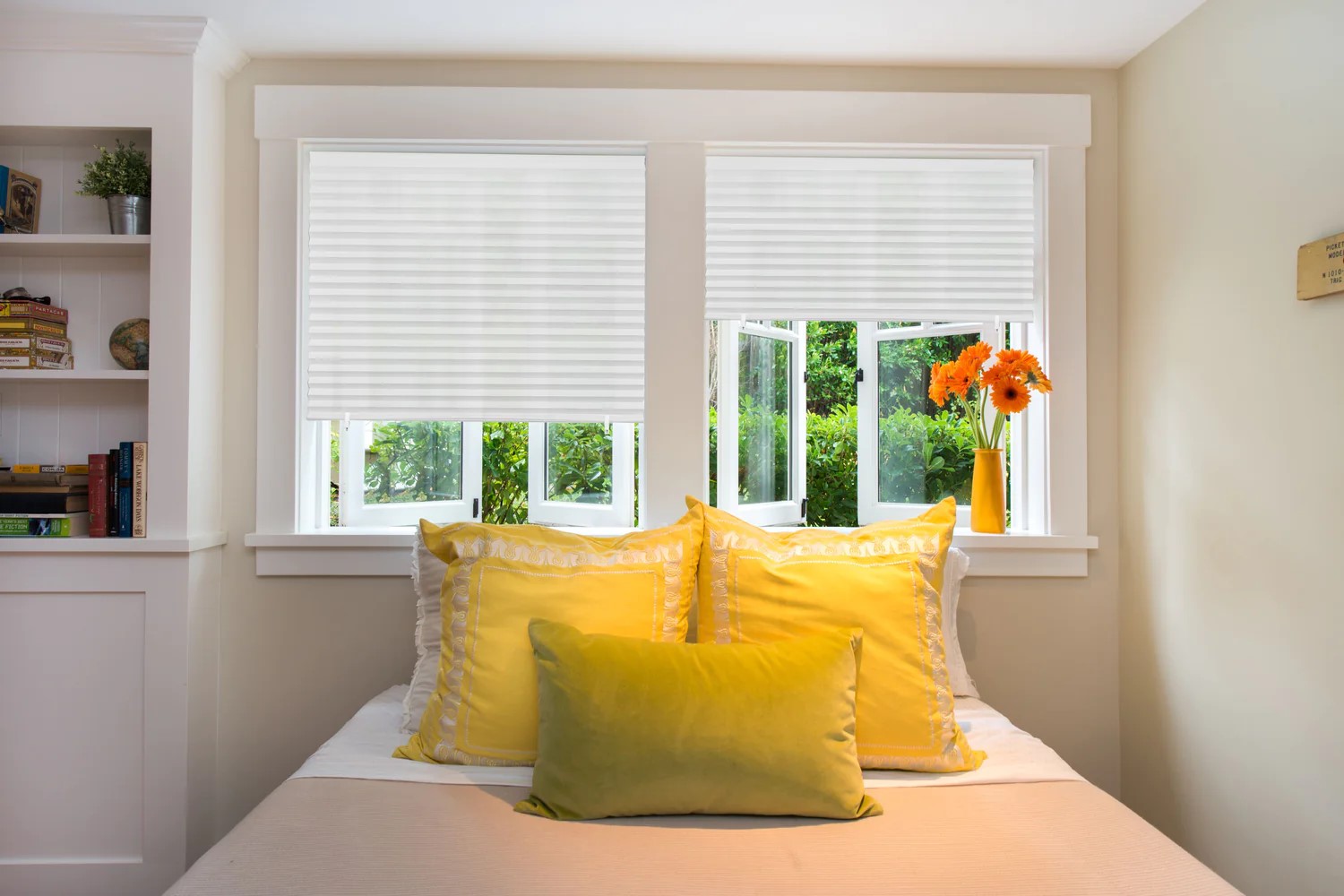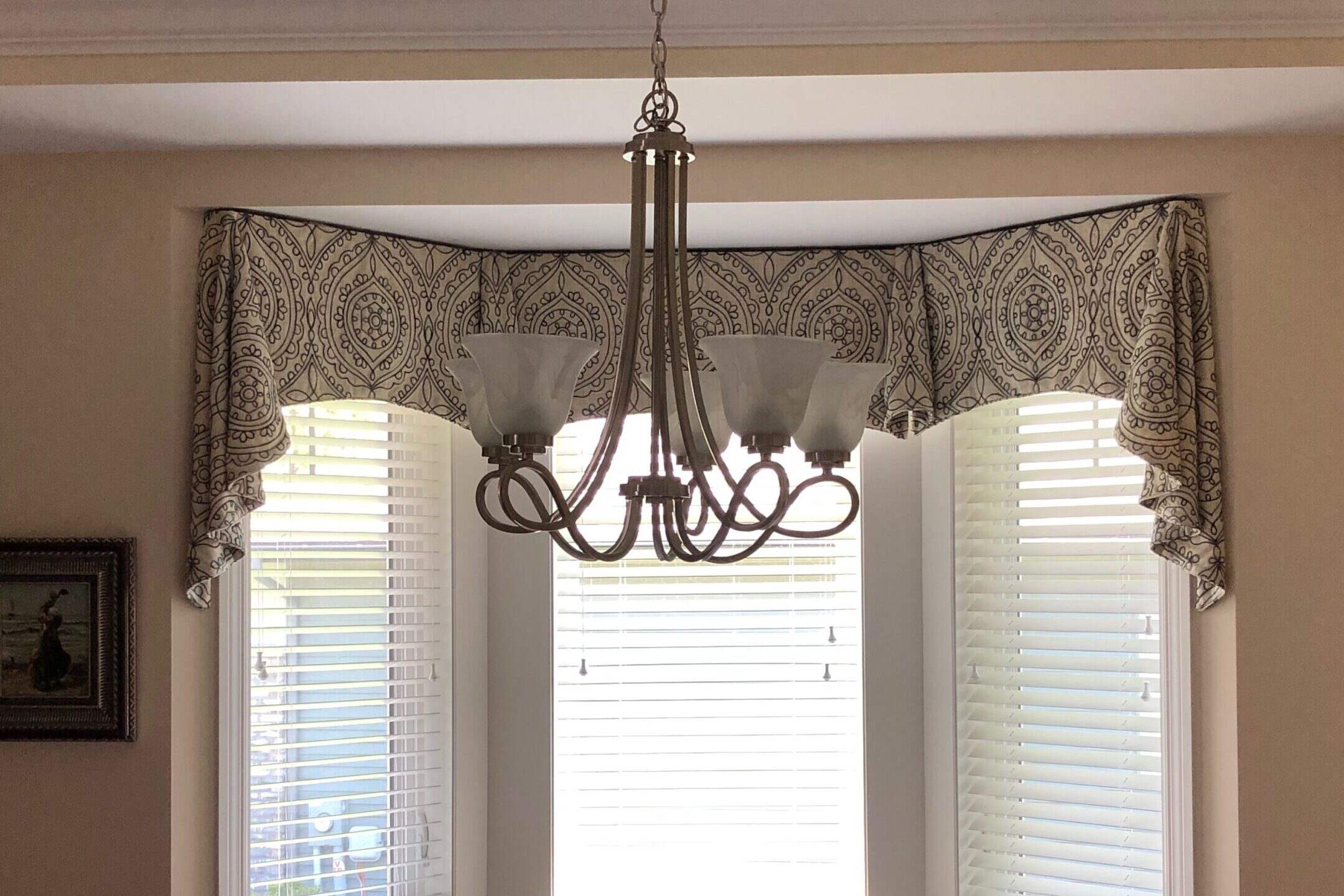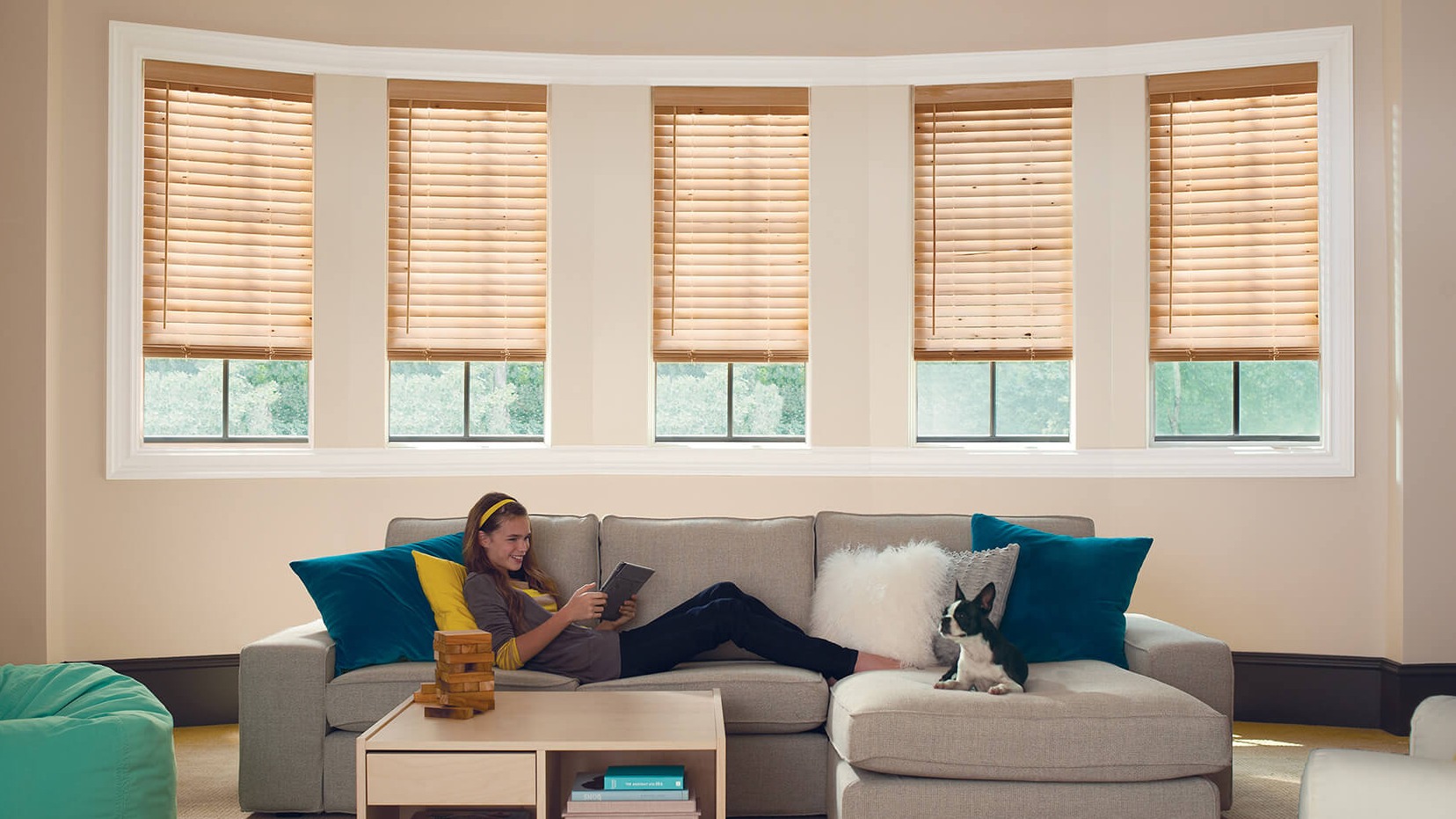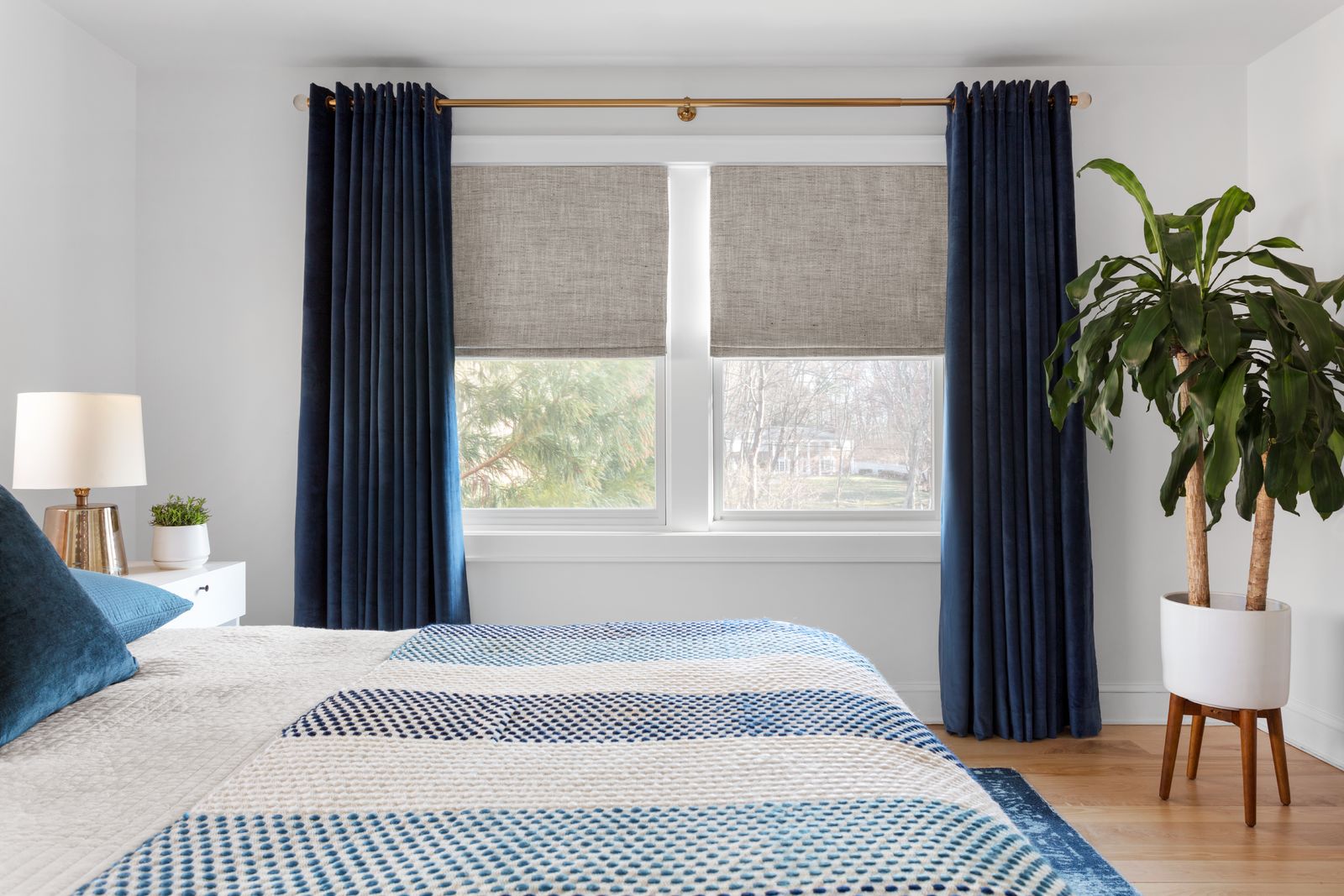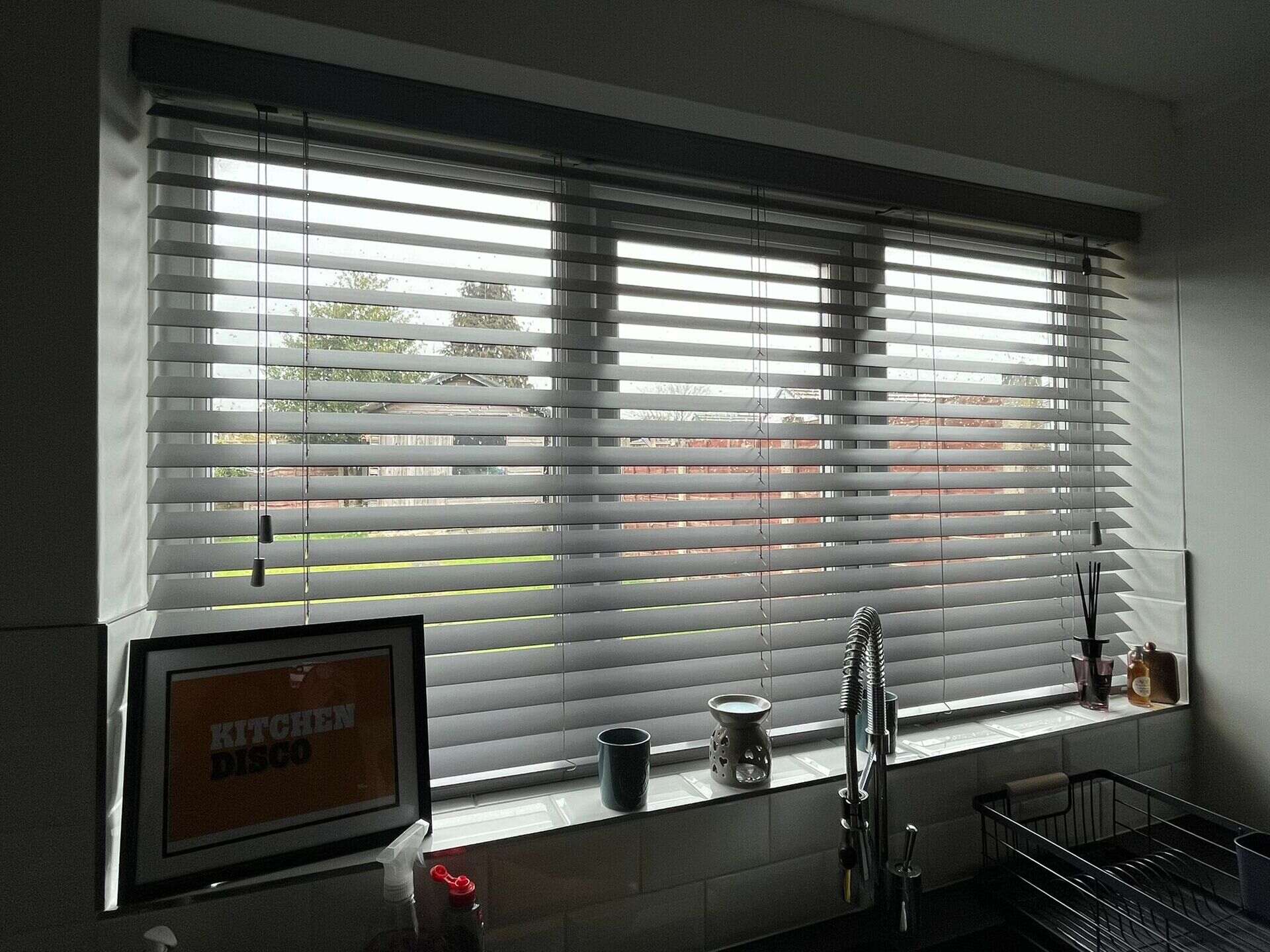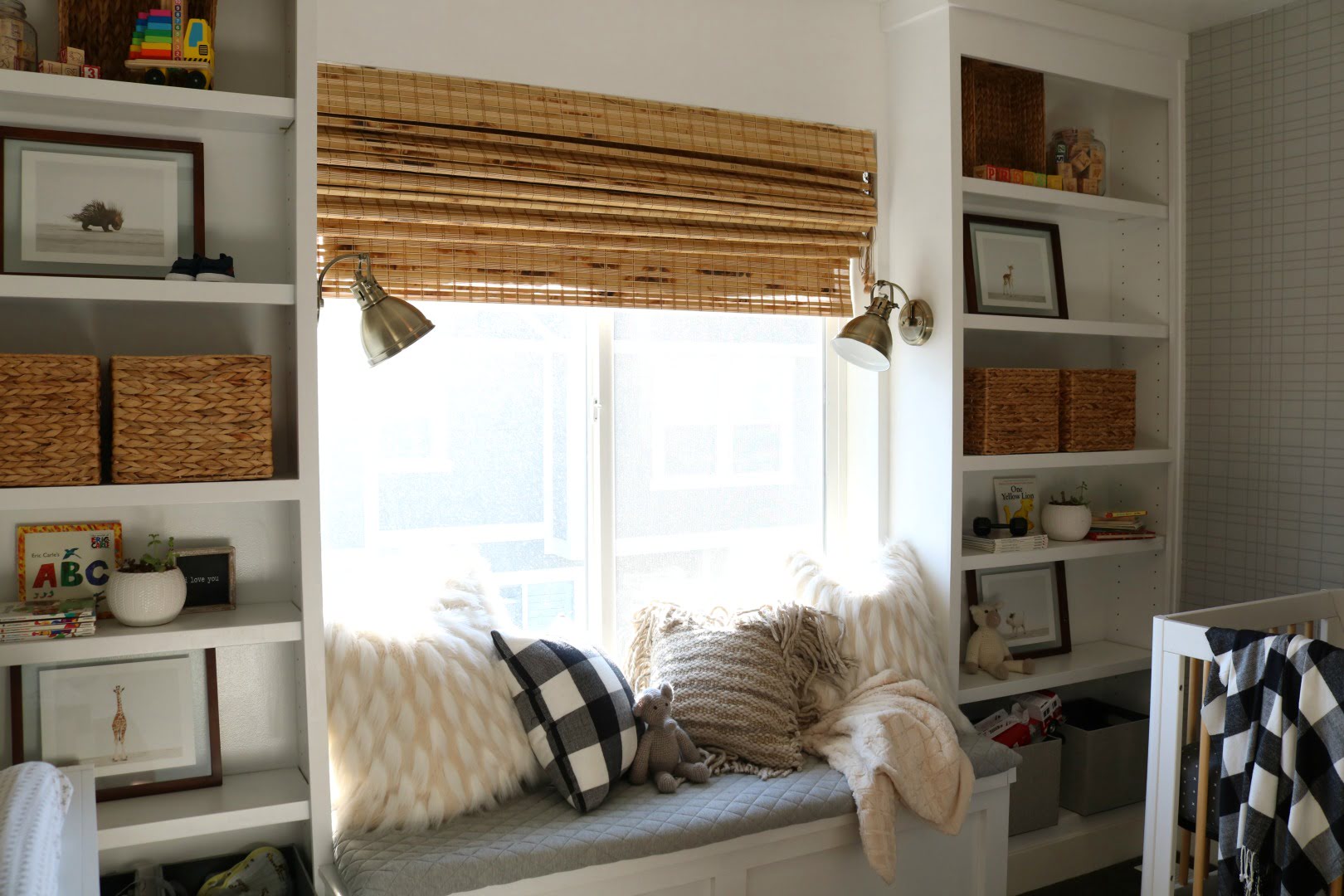

Articles
How To Hang Bamboo Blinds
Modified: December 7, 2023
Discover the best articles on how to hang bamboo blinds for a stylish and eco-friendly window treatment. Step-by-step guides, tips, and expert advice await you.
(Many of the links in this article redirect to a specific reviewed product. Your purchase of these products through affiliate links helps to generate commission for Storables.com, at no extra cost. Learn more)
Introduction
Welcome to our guide on how to hang bamboo blinds! Bamboo blinds are a popular choice for adding a touch of natural elegance and privacy to any room. They are not only functional but also environmentally friendly, as bamboo is a sustainable material. Whether you are a DIY enthusiast or a beginner, this step-by-step tutorial will guide you through the process of installing bamboo blinds with ease.
Before we dive into the installation process, let’s briefly discuss the materials you will need.
Key Takeaways:
- Accurate measurements and choosing the right mounting option are crucial for a successful bamboo blind installation. Whether you prefer an inside or outside mount, these steps ensure a perfect fit and desired aesthetic.
- Testing and adjusting the blinds post-installation is essential for smooth functionality and visual appeal. Take your time to ensure the blinds raise, lower, and tilt smoothly, providing both privacy and natural elegance to your space.
Read more: How To Cut Bamboo Blinds
Materials Needed
Before you start installing your bamboo blinds, gather the following materials:
- Bamboo blinds
- Mounting brackets
- Screws and wall anchors
- Tape measure
- Pencil
- Level
- Drill
- Step ladder
- Screwdriver
- Optional: Cord cleats or cord tensioners for child safety
Make sure you have all these materials ready before you begin the installation process. Now, let’s move on to the first step: measuring the window.
Step 1: Measure the Window
The first step in hanging bamboo blinds is to measure the window properly. Accurate measurements are crucial to ensure a perfect fit and to determine the size of the blinds you need to purchase.
Here’s how to measure your window:
- Start by measuring the width of the window frame from one side to the other. Take the measurement at three different points – the top, middle, and bottom – and use the smallest width as your reference.
- Next, measure the height of the window from the top of the frame to the bottom.
- If you plan to mount the blinds inside the window frame, subtract about 1/4 inch from each side and the top of the smallest width measurement to allow for proper clearance and operation of the blinds.
- If you prefer an outside mount, add at least 2-3 inches to each side and the top of the window frame to ensure adequate coverage and privacy.
Once you have measured your window, you can proceed to the next step of choosing the mounting option.
Step 2: Choose a Mounting Option
When it comes to mounting your bamboo blinds, you have two options: inside mount or outside mount.
Inside Mount: This option involves mounting the blinds within the window frame, providing a sleek and seamless look. Measure the width and height of the inside of your window frame and make sure there is enough depth to accommodate the mounting brackets and the blinds themselves. The blinds will sit flush with the window frame, allowing for a clean and minimalistic appearance.
Outside Mount: If you prefer a more dramatic and substantial look, an outside mount is the way to go. This option involves mounting the blinds on the wall or above the window frame. Measure the width and height of the area you want the blinds to cover, including any desired overlap on each side. The blinds will extend beyond the window frame, giving a visual illusion of larger windows and adding more privacy and light control.
Consider the overall design and function of your space when choosing the mounting option. Inside mounts are great for smaller rooms or if you want to highlight the window frame, while outside mounts are ideal for larger windows or if you want to create a statement.
Once you have decided on the mounting option, you can move on to installing the mounting brackets in the next step.
When hanging bamboo blinds, make sure to measure the window accurately before purchasing the blinds. Use a level to ensure the blinds are hung straight and secure the brackets firmly to the wall or window frame.
Step 3: Install Mounting Brackets
Now that you have chosen your mounting option, it’s time to install the mounting brackets. These brackets will hold the bamboo blinds securely in place.
Here’s how to install the mounting brackets:
- Start by holding the mounting bracket against the desired location either inside the window frame or on the wall.
- Using a pencil, mark the screw holes on the wall or window frame where the bracket will be attached.
- If you have a wooden window frame, you can screw the mounting bracket directly into it. However, if you have a drywall or a metal frame, it’s important to use wall anchors to ensure a sturdy installation.
- Drill pilot holes at the marked spots to make it easier to insert the screws.
- If using wall anchors, insert them into the pilot holes and then align the mounting bracket over the holes.
- Secure the mounting bracket in place by screwing it into the wall or window frame.
- Repeat the process for the remaining brackets, ensuring they are evenly spaced and at the same height.
Make sure to double-check that all brackets are securely fastened before proceeding to the next step. Providing a solid foundation is key to ensuring the blinds hang properly and function smoothly.
Now that you have installed the mounting brackets, you are ready to move on to attaching the bamboo blinds in the next step.
Read also: 12 Amazing Bamboo Blinds for 2025
Step 4: Attach the Bamboo Blinds
With the mounting brackets securely in place, it’s time to attach the bamboo blinds. This step will bring your window treatment to life and complete the installation process.
Here’s how to attach the bamboo blinds:
- Start by lifting the bamboo blinds and positioning them between the mounting brackets. Make sure they are centered and aligned with the brackets.
- Look for the small hooks or clips on the back of the blinds. These are designed to fit into the brackets.
- Insert the hooks or clips into the corresponding slots on the brackets. You may need to gently push or wiggle the blinds to ensure a secure fit.
- Once the blinds are securely attached, lower them gradually to test their operation. Make sure they raise and lower smoothly without any obstructions or misalignments.
If necessary, adjust the blinds by gently tilting them or re-attaching them to the brackets until they hang straight and level. Take your time to ensure the blinds are properly aligned and functioning correctly.
Additionally, if your bamboo blinds come with a cord system for raising and lowering, make sure to secure the cords out of reach of children using cord cleats or cord tensioners for added safety.
Now that you have successfully attached the bamboo blinds, it’s time to move on to the final step: testing and adjusting.
Step 5: Test and Adjust
After attaching the bamboo blinds, it’s essential to test their functionality and make any necessary adjustments to ensure they function properly.
- Start by testing the cord system, if applicable. Gently pull the cords to raise and lower the blinds, making sure they move smoothly without any resistance or tangling. If you encounter any issues, check for any knots or tangles in the cords and untangle them as necessary.
- Next, test the tilt mechanism, if your bamboo blinds have adjustable slats. Use the tilt wand or cord to tilt the slats, ensuring they open and close smoothly and evenly. Adjust the mechanism as needed to achieve your desired angle of light and privacy.
- Check for any unevenness or misalignment in the blinds. If you notice any slats that are not level, gently adjust them by hand until they are in the desired position.
- Inspect the blinds for any excess length or unevenness at the bottom. If needed, trim any excess slats with a pair of sharp scissors or a utility knife for a clean and polished look.
- Take a step back and observe the overall appearance of the blinds. Ensure that they are centered within the window frame or aligned with the desired position for an outside mount. Make any necessary adjustments to achieve the desired aesthetic.
Testing and making adjustments is crucial to ensure that your bamboo blinds are fully functional and visually appealing. Take your time during this step, as it will contribute to the overall satisfaction of your installation.
Congratulations! You have successfully installed and adjusted your bamboo blinds. Now sit back, relax, and enjoy the natural beauty and privacy they bring to your space.
Please remember to refer to the specific instructions provided by the manufacturer of your bamboo blinds for any additional guidance or particulars specific to your blinds.
Conclusion
Installing bamboo blinds can be a rewarding and straightforward DIY project that adds a touch of natural elegance to your windows. By following the steps outlined in this guide, you can confidently hang your bamboo blinds and enjoy the beauty and functionality they bring to your space.
Remember to start by measuring your window accurately to ensure a proper fit. Choose between an inside mount or outside mount option based on your preferences and the look you want to achieve. Install the mounting brackets securely, paying attention to the type of frame you have and using appropriate wall anchors if necessary.
Once the brackets are in place, attach the bamboo blinds by inserting the hooks or clips into the slots on the brackets. Test the blinds’ functionality by raising, lowering, and adjusting the slats as needed. Make sure the blinds hang straight and level, making any necessary adjustments along the way.
Lastly, step back and admire the finished result. The bamboo blinds will not only provide privacy but also add a touch of natural beauty and warmth to your room. Take a moment to appreciate the craftsmanship and effort put into the installation process.
We hope this guide has been helpful and that you feel confident in your ability to hang your bamboo blinds. Remember to consult the specific instructions provided by the manufacturer for any additional tips or considerations specific to your blinds.
Enjoy the ambience and functionality that your new bamboo blinds bring to your home!
Frequently Asked Questions about How To Hang Bamboo Blinds
Was this page helpful?
At Storables.com, we guarantee accurate and reliable information. Our content, validated by Expert Board Contributors, is crafted following stringent Editorial Policies. We're committed to providing you with well-researched, expert-backed insights for all your informational needs.
